What is wine tasting?
Wine tasting is the sensory examination and evaluation of wine, encompassing more than just the basic act of drinking. It’s a refined activity that involves assessing wine through its appearance, smell, and taste, allowing enthusiasts and professionals alike to appreciate and differentiate between the vast array of wine styles, grape varieties, and winemaking techniques. The process is often structured and can be conducted in various settings, from casual gatherings to formal wine tastings.
Key Components of Wine Tasting
-
Appearance: Observers examine the wine's clarity, color, and viscosity (legs/tears). This can give clues about the wine's age, alcohol content, and grape variety.
-
Smell: Also known as the "nose" of the wine, this step involves identifying the aromas by swirling the wine in the glass to release its bouquet. This phase can reveal a wine's fruitiness, earthiness, spices, and any possible faults.
-
Taste: The palate phase is where the wine is tasted to assess its sweetness, acidity, tannin levels, alcohol content, and body. The flavors detected during tasting can confirm or expand upon the aromas identified by smell.
-
Conclusion: After tasting, the taster can evaluate the wine's overall balance, complexity, and finish (the taste left in the mouth after swallowing). This is also when personal preferences and opinions about the wine's quality and aging potential are formed.
Wine tasting can be a personal hobby or a professional occupation, such as that of a sommelier or wine critic. Beyond its role in enjoyment and wine selection, wine tasting is integral to the wine industry for quality control, blending decisions, and determining the readiness of a wine for market. It's also a fundamental component of wine education, where participants learn to distinguish the subtle differences between wines and to articulate their perceptions using a common vocabulary. Whether for pleasure, education, or business, wine tasting offers an enriching experience that deepens one’s appreciation for this complex and storied beverage.
Types of Wine in Nepal
Hinwa
Hinwa is one of Nepal's most celebrated wine brands, particularly known for its unique use of local wild berries. Established in the hills of the eastern region of Nepal, Hinwa has carved out a distinct niche in the Nepali wine market with its innovative approach to winemaking. Here's a closer look at this notable brand:
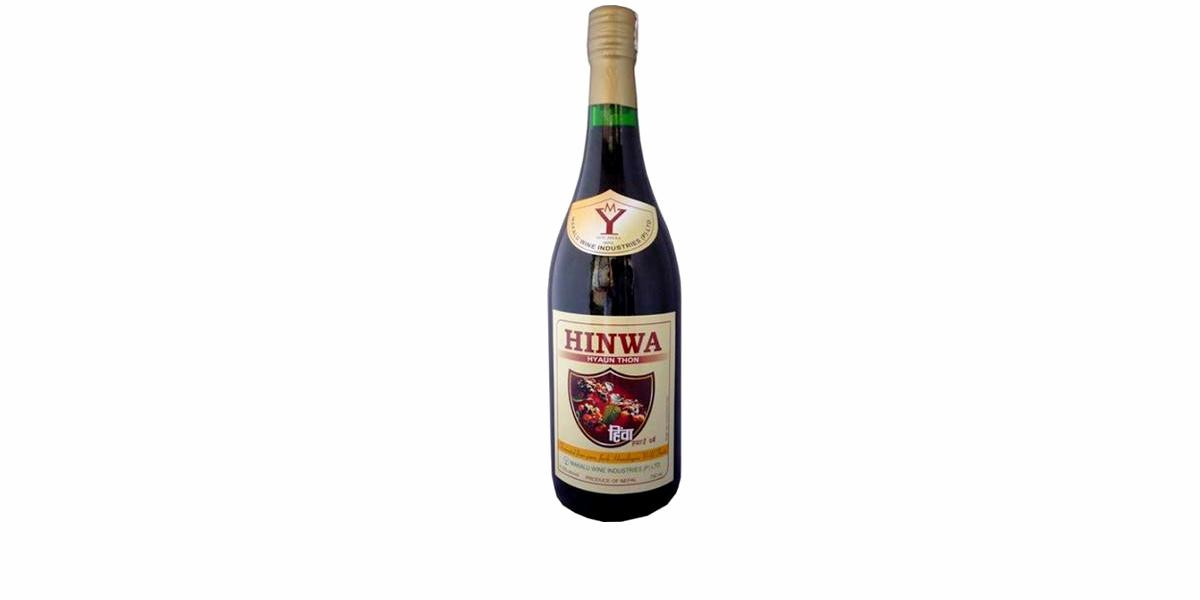
- Background and Production: Hinwa wine is produced by the Hinwa Winery, located in the Sankhuwasabha district, an area that boasts a rich biodiversity, including an abundance of wild fruits and berries. The brand takes advantage of these natural resources by incorporating local ingredients such as wild raspberries and blackberries into its wines. This not only lends Hinwa wines their distinctive flavor profiles but also supports local communities by sourcing ingredients directly from the forests and local farmers.
Wine Varieties
-
Red Wines: Made primarily from a blend of wild berries, these wines are noted for their rich color and depth of flavor, offering a sweet yet balanced taste.
-
White Wines: Although less common, Hinwa's white wines are crafted to capture the lighter, more aromatic qualities of the local fruits.
-
Sustainability and Community Impact: One of Hinwa's standout features is its commitment to sustainable winemaking practices and its positive impact on the local community. By utilizing wild fruits, the winery encourages the conservation of local forests and biodiversity. Additionally, Hinwa provides a source of income for local families who gather these fruits, contributing to the economic well-being of the region.
-
Awards and Recognition: Hinwa has gained recognition both domestically and internationally for its quality and innovative approach to winemaking. Its wines have been appreciated for their unique taste that captures the essence of Nepal's flora.
-
Wine Tourism and Tasting: The Hinwa Winery has become a destination for wine enthusiasts and tourists interested in exploring Nepali wines. Visitors to the winery can enjoy guided tours that offer insights into the winemaking process, from fruit picking to fermentation, and culminate in a tasting session where guests can sample the various wines produced by Hinwa.
Hinwa stands as a testament to the potential of Nepali winemaking, showcasing how traditional methods and local ingredients can create wines that are not only enjoyable but also deeply rooted in the culture and natural environment of Nepal. Its success encourages further exploration and development within the country's burgeoning wine industry, promising exciting prospects for the future of Nepali wines.
Divine
Divine Wine is another noteworthy brand in the growing wine industry of Nepal, known for its range of quality wines that include both grape-based and fruit wines. Positioned as a premium wine brand, Divine has managed to capture the interest of wine enthusiasts within Nepal and beyond, thanks to its commitment to quality and innovative winemaking techniques.
- About Divine Wine: Divine Wine is produced by the Shree Mahakali Wine Industries, which has been a part of Nepal's wine industry for several years. The winery is situated in the picturesque settings of Nepal, leveraging the unique climate and fertile soils to cultivate the grapes and fruits needed for their wines. Divine Wine's portfolio includes a variety of wines designed to cater to a broad spectrum of palates, ranging from dry to sweet.
Wine Varieties
-
Red Wines: Divine's red wines are appreciated for their robust flavors and aromas, often made from carefully selected grape varieties to ensure a rich tasting experience.
-
White Wines: The white wines under the Divine label are known for their crisp and refreshing taste, offering a lighter option for wine drinkers.
-
Fruit Wines: Apart from grape wines, Divine also produces fruit wines, utilizing local fruits to create unique and flavorful options that reflect the diversity of Nepal's agricultural produce.
-
Quality and Innovation: Divine Wine prides itself on adopting modern winemaking techniques while also respecting traditional practices. This blend of old and new methodologies has allowed Divine to maintain high standards of quality across its wine range. The brand emphasizes the careful selection of ingredients and meticulous control over the winemaking process, from fermentation to bottling, ensuring that each bottle of Divine Wine offers a memorable tasting experience.
-
Community and Sustainability: Understanding the importance of sustainability in agriculture, Divine Wine takes steps to ensure that its production processes are environmentally friendly and sustainable. Moreover, by employing local workers and sourcing locally, Divine contributes to the economic development of its surrounding communities, promoting a model of business that benefits both the environment and the people.
-
Availability and Recognition: Divine Wine has established a strong presence in the Nepali market, available in wine shops, restaurants, and hotels across the country. Its quality has not only garnered a loyal customer base locally but has also begun to attract attention from international markets, signaling a positive trend for the expansion of Nepal's wine industry.
Divine Wine embodies the essence of Nepali winemaking, combining the rich flavors of the region with sophisticated production techniques to create wines that are truly divine. As the wine industry in Nepal continues to evolve, brands like Divine play a crucial role in introducing the unique tastes of Nepal to the world, one bottle at a time.
Dadaghare
Dadaghare is among the most distinguished wine brands in Nepal, renowned for embracing organic farming practices and focusing on producing wines without the addition of chemicals or artificial preservatives. This approach has not only set Dadaghare apart in the Nepali wine market but has also contributed to its growing popularity among health-conscious consumers and those who appreciate the natural taste of wine.
- Background and Philosophy: Dadaghare hails from the western part of Nepal, an area known for its rich soil and favorable climate conditions for agriculture, including viticulture. The brand has built its reputation on using locally sourced grapes and fruits, adhering strictly to organic farming methods. The philosophy behind Dadaghare is to produce wines that are as natural as possible, reflecting the true essence of the ingredients used.
Wine Varieties
-
Red Wines: Characterized by their depth and complexity, Dadaghare's red wines are made from carefully selected grape varieties that thrive in Nepal's climate. These wines are favored for their rich flavors and smooth finish.
-
White Wines: The white wines from Dadaghare are known for their crispness and aromatic profiles, offering a refreshing contrast to the more robust reds.
-
Fruit Wines: In addition to grape wines, Dadaghare also produces wines from local fruits, providing a unique tasting experience that highlights the diversity of Nepal's agricultural produce.
-
Commitment to Organic Practices: Dadaghare's commitment to organic winemaking practices is evident in every aspect of its production process, from the pesticide-free vineyards to the minimal intervention in the winemaking process itself. This commitment ensures that each bottle of Dadaghare wine is not only delicious but also environmentally friendly and sustainable.
-
Community Impact: By sourcing ingredients locally and employing traditional farming practices, Dadaghare supports the local economy and promotes sustainable agricultural development in its region. This approach has fostered a strong sense of community and has contributed to the preservation of local farming techniques.
-
Recognition and Availability: Although the brand may not be as widely available internationally as some larger wine producers, Dadaghare has garnered significant recognition within Nepal for its quality and dedication to natural winemaking. It's a staple in many Nepali households and is available in local markets, specialty wine stores, and restaurants throughout the country.
Dadaghare stands as a testament to the potential of organic winemaking in Nepal, proving that it's possible to produce exceptional wines through sustainable practices. As the brand continues to grow and gain recognition, Dadaghare remains a symbol of the rich agricultural heritage of Nepal and its future potential in the global wine industry.
Big Master Wine
Big Master Wine is a distinctive brand within Nepal's emerging wine market, known for its production of fruit wines. Emphasizing the rich diversity of Nepal's fruit produce, Big Master Wine leverages the abundance and variety of fruits available across the country to create unique and flavorful wines. This approach not only highlights the potential for innovative winemaking in Nepal but also supports local agriculture by utilizing fruits that are locally sourced.
Profile and Offerings
-
Apple Wine: Made from ripe apples, this wine offers a crisp and refreshing taste, embodying the essence of Nepali apples.
-
Peach Wine: Capturing the delicate sweetness and aroma of peaches, Big Master's peach wine is a testament to the versatility of fruit wines.
-
Pomegranate Wine: This wine combines the health benefits and antioxidant properties of pomegranates with a rich, sweet flavor profile, making it a popular choice among consumers.
-
Production and Quality: Big Master Wine is committed to maintaining high standards of quality in its winemaking process. By carefully selecting fruits at their peak ripeness and employing traditional methods alongside modern techniques, the brand ensures that the natural flavors and characteristics of the fruits are preserved and enhanced in every bottle. This dedication to quality has helped Big Master Wine carve out a niche in Nepal's wine market.
-
Sustainability and Local Impact: One of the key aspects of Big Master Wine's operation is its focus on sustainability and supporting local communities. By sourcing fruits from local farmers, the brand not only contributes to the local economy but also promotes sustainable agricultural practices. This approach has made Big Master Wine a valuable partner for local farmers, offering them a reliable market for their produce.
-
Consumer Appeal: The unique flavors and quality of Big Master Wine's offerings have garnered a loyal customer base within Nepal. The brand's focus on fruit wines also caters to a growing interest among consumers in exploring wine varieties beyond traditional grape wines, offering them new tasting experiences.
Big Master Wine represents an innovative and important segment of Nepal's wine industry, showcasing the potential for fruit wine production in a country blessed with an abundance of diverse fruits. Through its commitment to quality, sustainability, and support for local communities, Big Master Wine not only provides delightful wines to its customers but also contributes to the growth and diversification of Nepal's wine market.
Pataleban Vineyard
Pataleban Vineyard is a pioneering venture in the Nepali wine industry, uniquely positioned within the captivating natural beauty of Nepal, close to the capital city, Kathmandu. Named after the lush Pataleban region known for its biodiversity, the vineyard is a testament to Nepal's potential in viticulture and winemaking, combining traditional practices with modern techniques to produce wines that capture the essence of the local terroir.
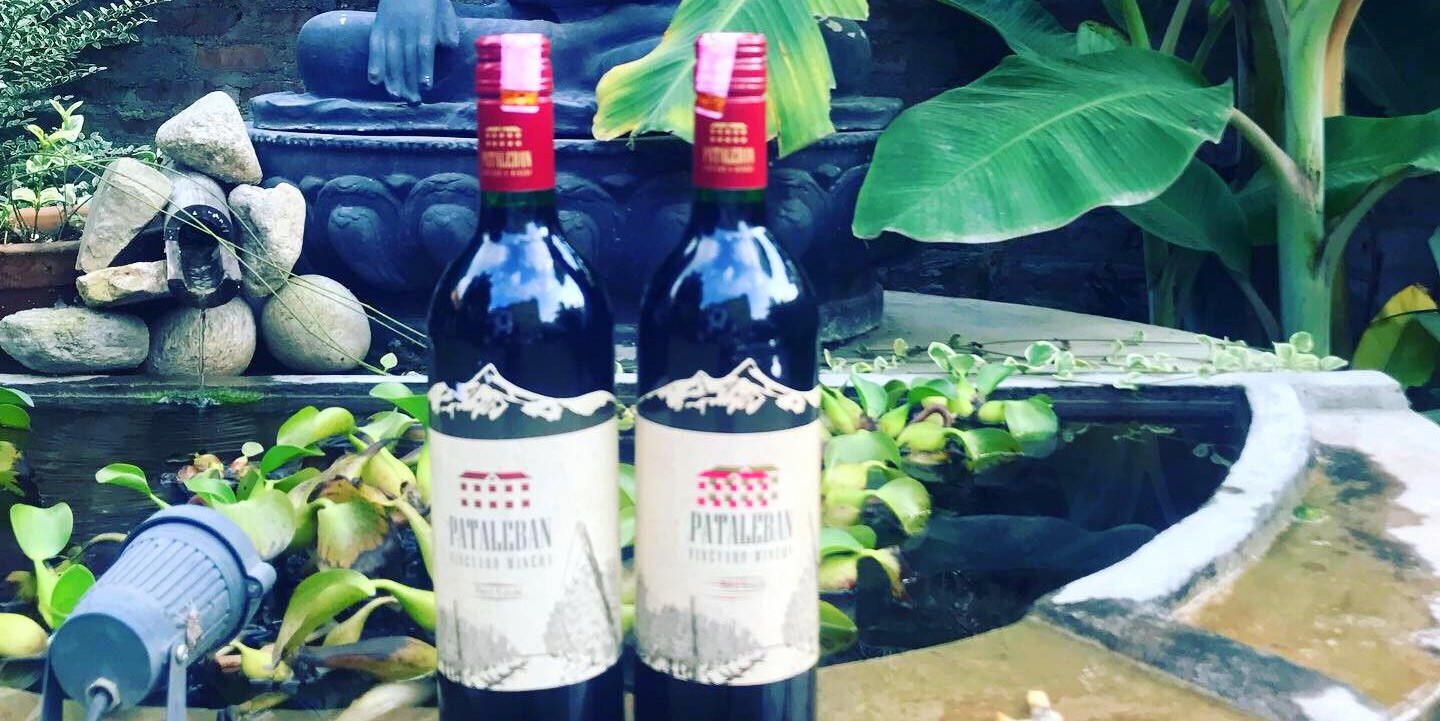
- Vision and Philosophy: Pataleban Vineyard operates with a clear vision to develop and promote Nepali wine on both a national and international scale. The vineyard's philosophy centers around sustainable agriculture and environmental stewardship, with a focus on producing high-quality wines that reflect the unique characteristics of the region's climate and soil.
Wine Varieties
-
Red Wines: The vineyard's red wines are known for their rich flavors and depth, often made from international grape varieties adapted to the local climate.
-
White Wines: Crisp, refreshing, and aromatic, Pataleban's white wines showcase the versatility of their grape selection and winemaking skill.
-
Fruit Wines: In addition to grape wines, Pataleban has experimented with local fruits to produce unique wines, adding to the diversity of their offerings.
-
Sustainable Practices: Sustainability is at the core of Pataleban Vineyard's operations. The vineyard employs organic farming methods wherever possible, minimizing the use of synthetic pesticides and fertilizers to maintain the health of the soil and ecosystem. This approach not only contributes to the quality of their wines but also ensures the preservation of the natural environment for future generations.
-
Wine Tourism: Pataleban Vineyard is not just a place for winemaking; it's also a destination for wine enthusiasts and tourists. The vineyard offers tours and tastings, allowing visitors to explore the vineyards, learn about the winemaking process, and sample the wines in a picturesque setting. This wine tourism aspect has made Pataleban a popular spot for both locals and foreigners looking to experience Nepali wine culture firsthand.
-
Community Engagement: The vineyard is deeply rooted in the local community, providing employment opportunities and supporting local agriculture. By sourcing materials and labor locally, Pataleban Vineyard contributes to the economic development of the area and promotes a sense of community ownership and pride in the vineyard's successes.
Pataleban Vineyard stands as a shining example of Nepal's emerging wine industry, showcasing the possibilities of winemaking in the country. With a commitment to quality, sustainability, and community engagement, Pataleban is not just producing wines; it's crafting a legacy that puts Nepali wine on the map, inviting wine lovers from around the world to explore the flavors and stories of Nepal through its wines.
Traditional Alcoholic Drinks in Nepal
Raksi
Raksi is a traditional alcoholic beverage deeply ingrained in the culture and social practices of Nepal. This distilled spirit, often compared to a strong brandy or moonshine, holds a special place in the hearts of many Nepalis, symbolizing hospitality, celebration, and religious significance. Raksi, made from fermented grains such as rice, millet, or sometimes corn and fruits, is celebrated for its potency and the warmth it provides, especially in the cold mountainous regions of the country.

-
Production Process: The production of Raksi is a time-honored tradition, involving the fermentation of grains, which are then distilled in a simple, often homemade, distillation apparatus. The process starts with cooking the grains, which are then cooled and mixed with murcha (a traditional fermenting agent containing yeast and bacteria cultures) to initiate fermentation. After a few days of fermentation, the mixture is distilled to produce Raksi. The art of making Raksi is passed down through generations, with each region and even each household boasting its own unique flavor profile and strength.
-
Cultural and Social Significance: Raksi is more than just an alcoholic drink in Nepal; it's a cultural emblem. It is widely consumed during festivals, weddings, religious ceremonies, and other social gatherings. In many communities, offering Raksi to guests is a sign of respect and hospitality. During festivals like Dashain and Tihar, Raksi is not only consumed but also offered to gods and ancestors in rituals, highlighting its deep-rooted significance in Nepali tradition.
-
Consumption: Traditionally, Raksi is served warm, especially during cold weather, enhancing its soothing and warming effect. It is often consumed neat, in small clay or metal cups, and accompanied by traditional Nepali snacks or meals. The warmth of Raksi, combined with its strong flavor, makes it a favored choice among many Nepalis looking to celebrate, relax, or simply enjoy the company of friends and family.
-
Variations and Flavors: The flavor and strength of Raksi can vary significantly from one region to another and even from one household to another, depending on the ingredients used and the distillation process. Some Raksi are smooth and clear, while others may have a stronger, more robust flavor. The diversity in preparation methods and ingredients used across different communities contributes to the rich tapestry of Raksi varieties found throughout Nepal.
-
Modern Day and Commercial Production: While traditionally homemade, Raksi is also commercially produced and available in bottles in markets across Nepal. However, many locals still prefer the traditional homemade Raksi, valuing its authenticity and the communal experience of its production and consumption. The commercial availability has made Raksi more accessible to a broader audience, including tourists eager to taste this traditional Nepali spirit.
Raksi is not just a drink; it's a significant part of Nepal's cultural heritage. Its preparation and consumption are deeply embedded in the country's social fabric, symbolizing warmth, hospitality, and celebration. As Nepal continues to modernize, the tradition of Raksi remains a cherished link to the country's rich cultural past.
Chhaang
Chhaang is a traditional fermented alcoholic beverage that is widely consumed across the Himalayan regions of Nepal, Tibet, and parts of India. It is often referred to as "Tibetan beer" or "barley beer," although it can also be made from millet or rice. Chhaang plays a significant role in the cultural and social life of these communities, serving as a staple drink during festivals, religious ceremonies, and social gatherings. Its mild alcohol content, coupled with its warming and nutritional qualities, makes it a popular choice, especially in the cold mountainous climates.
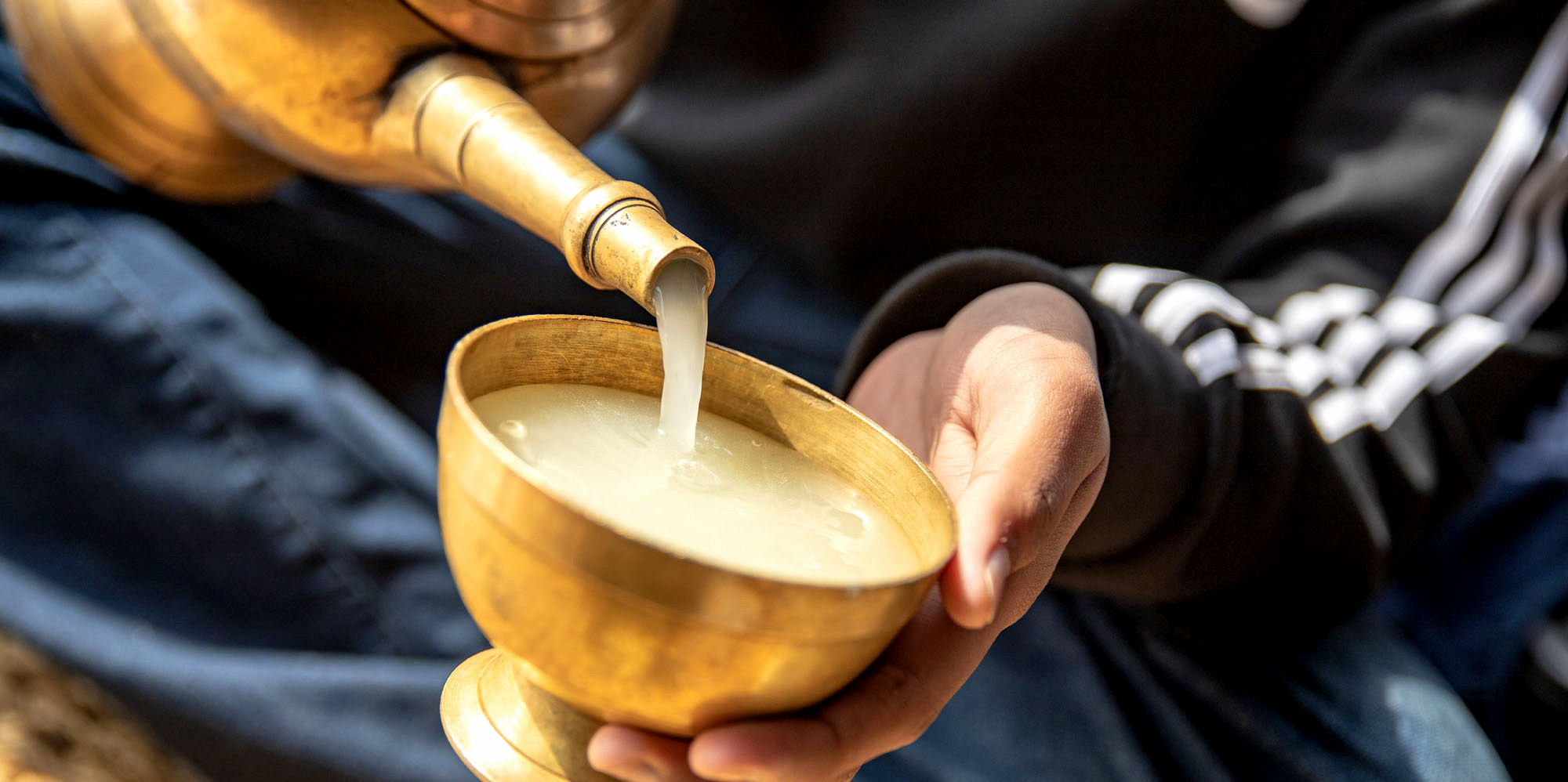
-
Production Process: The production of Chhaang involves a natural fermentation process. The primary ingredient, which can be barley, millet, or rice, is first cooked and then cooled. It is then mixed with a fermenting agent, traditionally a special type of yeast and bacterial culture known locally as "murcha." The mixture is allowed to ferment for several days in a warm environment. Once fermentation is complete, the Chhaang is ready to be consumed, although it can also be distilled to produce a stronger alcoholic beverage known as "raksi."
-
Cultural Significance: Chhaang is deeply embedded in the cultural fabric of the Himalayan peoples. It is not just a drink; it's a symbol of hospitality and camaraderie. Offering Chhaang to guests is a sign of welcome and respect. It is also integral to many religious and cultural ceremonies, where it is consumed to celebrate auspicious occasions, honor deities, and facilitate social bonding.
-
Consumption and Serving: Traditionally, Chhaang is served in large communal bowls or bamboo containers, from which individuals drink using bamboo straws. This communal aspect of consuming Chhaang highlights its role in fostering community and togetherness. It is often served warm, especially during the colder months, adding to its appeal as a comforting beverage. The taste of Chhaang is slightly sour and yeasty, with a mild sweetness depending on the grains used and the length of fermentation.
-
Health Aspects: Chhaang is considered nutritious and is believed to have several health benefits, including providing energy and aiding in digestion. Its relatively low alcohol content makes it a suitable drink for consumption throughout the day without leading to intoxication. The warmth it provides is particularly valued in cold climates, where it helps to maintain body temperature.
-
Modern Adaptations: While Chhaang remains a traditional drink, its preparation and consumption have seen some modern adaptations, especially in urban areas and among younger generations. However, its cultural significance and place in the social and religious life of the Himalayan communities remain largely unchanged.
Chhaang is more than just a traditional alcoholic beverage; it is a vital part of the cultural identity of the Himalayan region. It embodies the spirit of hospitality, community, and celebration. Despite the changing times, Chhaang continues to be cherished by the people of Nepal, Tibet, and the surrounding areas, preserving a rich tradition that has been passed down through generations.
Aila
Aila is a traditional Nepali distilled spirit that holds a cherished place in the cultural and social fabric of the Newar community of the Kathmandu Valley. It's a symbol of hospitality, festivity, and religious significance. This potent alcoholic beverage is not just a drink; it's an integral part of Newari rituals, festivals, and daily life, embodying the rich cultural heritage of Nepal.
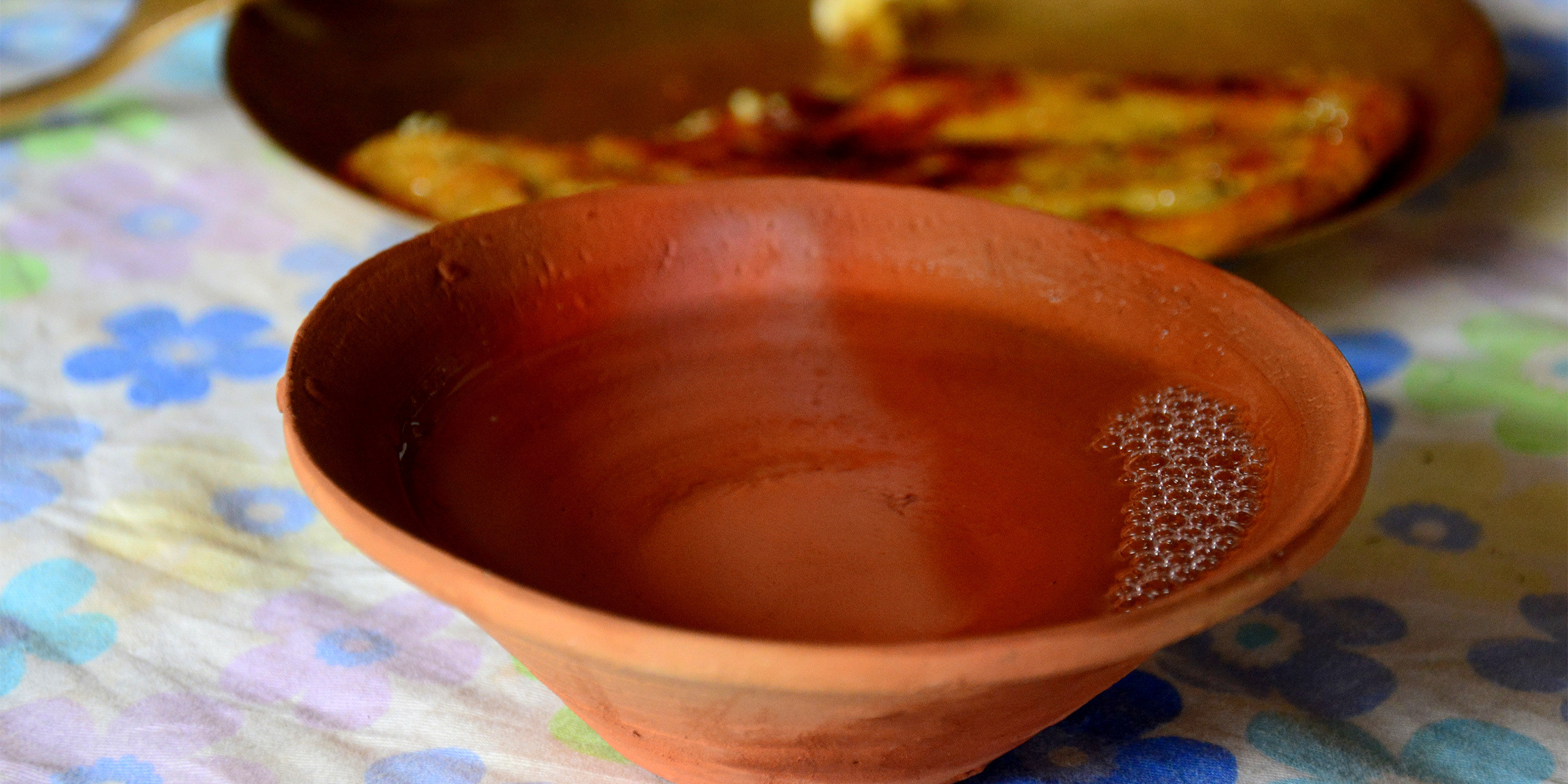
-
Production Process: The production of Aila is a meticulous craft passed down through generations. It begins with the fermentation of rice, although other grains like millet can also be used. The process involves cooking the grains, cooling them down, and then mixing them with a traditional fermenting agent known as "marcha," a cake-like substance containing a mix of yeast and bacteria. The mixture is allowed to ferment for several days, after which it undergoes a distillation process. The distillation is often carried out in traditional clay or copper stills, giving Aila its distinct flavor and potency.
-
Cultural Significance: Aila is much more than an alcoholic beverage in the Newar community; it's a cultural icon. It's commonly served during various festivals, religious ceremonies, and social gatherings, symbolizing joy, prosperity, and well-being. Offering Aila to guests is considered a gesture of respect and hospitality. Additionally, it plays a crucial role in rituals and offerings to gods and ancestors, signifying its deep-rooted spiritual importance.
-
Consumption and Taste: Aila is renowned for its smooth yet potent profile. It's typically clear in color and can range in alcohol content, but it is often quite strong. The flavor of Aila is complex and can vary depending on the fermentation and distillation techniques, with some variants offering a slightly sweet, fruity, or floral aftertaste. It's usually consumed neat, in small traditional cups known as "palas," and is often accompanied by Newari delicacies, enhancing the culinary experience.
-
Social and Communal Aspects: The communal aspect of Aila drinking is significant, promoting social cohesion and communal harmony. It is a staple in celebrations, whether it's a marriage, a festival like Indra Jatra and Dashain, or simply a family gathering. The act of sharing Aila reinforces bonds and expresses a collective sense of identity and belonging within the community.
-
Modern Adaptations and Commercial Production: While traditionally homemade, the increasing popularity of Aila has led to its commercial production and bottling, making it accessible beyond the Newar community and the Kathmandu Valley. Modern distilleries have begun to produce Aila, maintaining its traditional essence while ensuring quality and consistency. This has introduced Aila to a broader audience, including tourists and enthusiasts looking to explore traditional Nepali spirits.
Aila is not merely an alcoholic beverage; it is a testament to Nepal's rich cultural diversity and the Newar community's enduring traditions. Its production, consumption, and integral role in ceremonies and celebrations highlight the deep cultural significance of Aila, making it a treasured part of Nepal's intangible cultural heritage. As Aila finds its way into the global spirits market, it carries with it the stories, traditions, and cultural richness of Nepal.
Tongba (Hot Millet Beer)
Tongba, often referred to as hot millet beer, is a traditional alcoholic beverage indigenous to the Himalayan regions of Nepal, particularly popular among the Limbu and other ethnic groups of eastern Nepal. This unique drink is not only a testament to the cultural richness and agricultural practices of these communities but also serves as a comforting warmth in the cold mountainous climate.
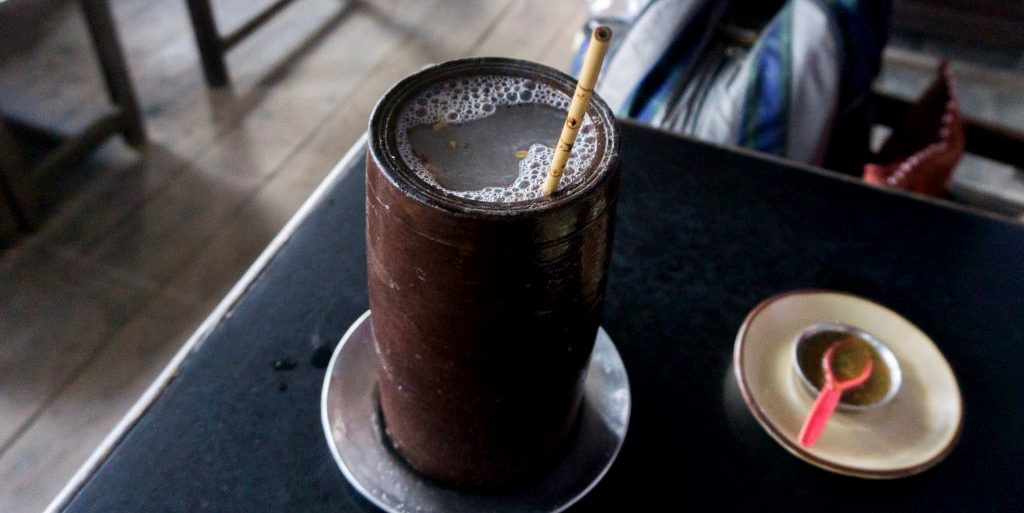
-
Production Process: The production of Tongba begins with the fermentation of millet. The millet is cooked, cooled, and then mixed with a natural fermenting agent known as "marcha," a traditional yeast made from various herbs and grains. The mixture is allowed to ferment for several days, after which it is dried and stored. To prepare the drink, the fermented millet is placed in a traditional container, often a bamboo or wooden vessel known as a "tongba," and boiling water is added. After a few minutes, allowing the flavors to infuse, the beverage is ready to be consumed through a bamboo straw known as a "pipsing."
-
Cultural Significance: Tongba is much more than a drink; it is a symbol of hospitality and community in the regions where it is consumed. Offering Tongba to guests is a gesture of welcome and respect, often accompanied by traditional snacks and stories. It plays a significant role in social gatherings, festivals, and rituals, embodying the warmth and generosity of the Himalayan people.
-
Consumption and Experience: The experience of drinking Tongba is unique. The beverage is consumed hot, making it an ideal drink for the cold climates of the Himalayas. The bamboo straw used to sip the drink allows the liquid to be drawn up while leaving the fermented millet grains at the bottom. As the hot water gradually extracts the alcohol and flavors from the grains, more hot water can be added, extending the social and drinking experience for hours.
-
Taste and Alcohol Content: Tongba offers a mild, slightly tangy, and somewhat earthy flavor. Its alcohol content is relatively low but can vary depending on the length of fermentation and the number of times hot water is replenished. The drink's unique preparation and consumption method allows individuals to control the strength and flavor of their beverage to some extent.
-
Health Aspects: In addition to its cultural significance, Tongba is appreciated for its supposed health benefits. The fermentation process introduces beneficial probiotics, and the drink is believed to aid in digestion and offer nutritional benefits, including vitamins and minerals from the millet.
-
Modern Popularity and Tourism: While deeply traditional, Tongba has gained popularity among tourists and urban dwellers in Nepal, intrigued by its unique preparation and cultural heritage. It is increasingly available in restaurants and cultural festivals outside its traditional regions, offering a taste of Himalayan tradition to those eager to explore the diverse culinary landscape of Nepal.
Tongba is not just a traditional alcoholic beverage but a vital component of the cultural and social fabric of the Himalayan regions of Nepal. It symbolizes hospitality, community, and the enduring traditions of the ethnic groups that cherish it. As it gains wider recognition, Tongba stands as a proud representation of Nepal's rich cultural diversity and the simple, profound pleasures that traditional practices offer.
Ways to Taste Wine
Tasting wine is an art that involves engaging all your senses to appreciate the complexity, texture, flavor, and aroma of the wine. Whether you're a seasoned connoisseur or a curious novice, learning how to taste wine can enhance your enjoyment and understanding of this nuanced beverage. Here are the fundamental steps to tasting wine like a pro:
-
Look: Begin with observing the wine's appearance. Pour the wine into a clear glass and hold it against a white background or in good light. Note the color, which can give clues about the wine's age and the grape variety. Reds deepen with age, while whites may darken. Also, observe the wine's clarity and viscosity, often referred to as its "legs" or "tears," which can indicate alcohol content and texture.
-
Swirl: Swirling the wine gently in the glass exposes it to oxygen, enhancing its aromas. This action allows the wine to release its diverse range of scents. Note that swirling can be done either by moving the glass in small circles on a flat surface or by holding the stem and swirling it in the air. Be cautious to avoid spilling, especially if the glass is full.
-
Smell: After swirling, take a moment to smell the wine. First impressions come from the primary aromas, which are grape-derived and can include fruit, floral, and herbal notes. Secondary aromas come from the fermentation process, such as yeast-derived smells. Tertiary aromas develop from aging, either in bottle or oak, and can include vanilla, toast, or nutty scents. Try to identify the different layers of aromas, as this can significantly enhance your tasting experience.
-
Taste: Now, take a small sip and let the wine roll around your mouth. This step involves sensing the wine's body (light, medium, or full), texture, and balance between sweetness, acidity, tannins, and alcohol. Identify the flavors, which often mirror the aromas but can reveal additional nuances. Consider the wine's complexity and how the flavors evolve from the moment the wine enters your mouth to after you've swallowed.
-
Savor: After swallowing, pay attention to the wine's finish – the aftertaste that lingers. A longer and more flavorful finish is generally indicative of a wine's quality. Reflect on the overall experience, including how well the wine's elements (acidity, tannins, sweetness, and alcohol) are balanced.
-
Evaluate: Finally, take a moment to summarize your overall impression of the wine. Was it enjoyable and well-balanced? Did it have complexity and a pleasing finish? This step is highly subjective and depends on personal preference. Remember, the most important aspect of wine tasting is enjoying the wine and the experience of discovering what appeals to your palate.
By following these steps, you'll be able to appreciate the depth and breadth of flavors and aromas wine has to offer, deepening your understanding and appreciation of this celebrated beverage.
Wine tasting in Nepal offers a unique journey through its emerging wine culture, blending traditional flavors with new ventures in vineyards against the stunning backdrop of the Himalayas. It’s an opportunity to explore the rich tapestry of Nepal's heritage, from the artisanal craft behind each bottle to the integration of indigenous beverages like Raksi and Chhaang. This experience promises an authentic insight into Nepal’s hospitality and natural beauty, making it a must-visit destination for wine enthusiasts looking for adventure and discovery.
FAQs for Wine Tasting in Nepal
Q: Can I find both local and international wines in Nepal?
A: Yes, Nepal offers both local wines, including those from grapes and various fruits, and a selection of imported wines. The local wine scene is vibrant, with unique flavors to explore.
Q: Are there vineyard tours available in Nepal?
A: Yes, vineyard tours are available, particularly around Kathmandu and Pokhara, providing insights into winemaking and tastings of local wines.
Q: What types of wine can I expect to taste in Nepal?
A: You'll find traditional grape wines, fruit wines like apple and berry, and traditional beverages such as Raksi and Chhaang.
Q: Is wine tasting in Nepal suitable for beginners?
A: Absolutely. Wine tasting in Nepal is a great way for beginners and enthusiasts alike to learn about and enjoy wine.
Q: What is the best time of year for wine tasting in Nepal?
A: The harvest season from September to November is ideal, thanks to pleasant weather and the possibility of special vineyard events.
Q: How much does wine tasting cost in Nepal?
A: Costs vary by venue and experience. It's advisable to check with specific places for the most accurate information.
Q: Do I need to book in advance for wine tasting or vineyard tours?
A: Booking in advance is recommended, especially for vineyard tours and during peak tourist seasons, to ensure availability.
Q: Are there any wine festivals in Nepal?
A: Yes, wine festivals and events are increasingly popular, particularly in Kathmandu, offering opportunities to taste various wines and learn from experts.
Q: Can I buy wine directly from vineyards?
A: Many vineyards allow direct purchases, often at better prices than retail outlets.
Q: Is wine tasting in Nepal family-friendly?
A: While tastings are for adults, many vineyards are in scenic locations that are enjoyable for the whole family, though some may have age restrictions for minors.
For the Nepal tour, please click here.
If you are looking for different kinds of Nepal Tours or Trekking Packages, feel free to contact us.







